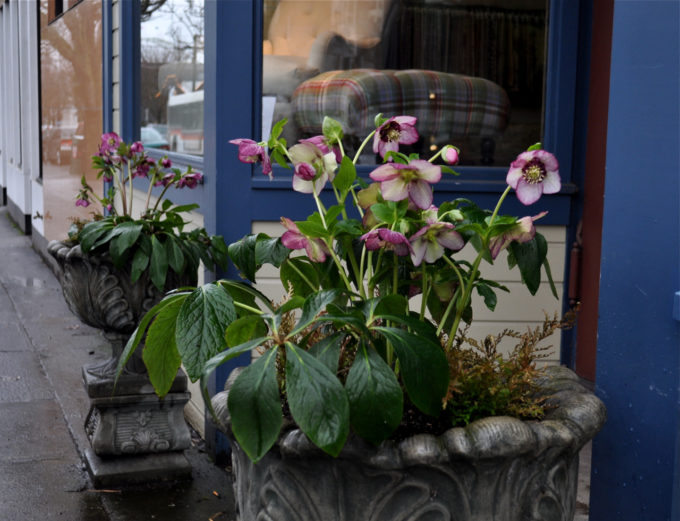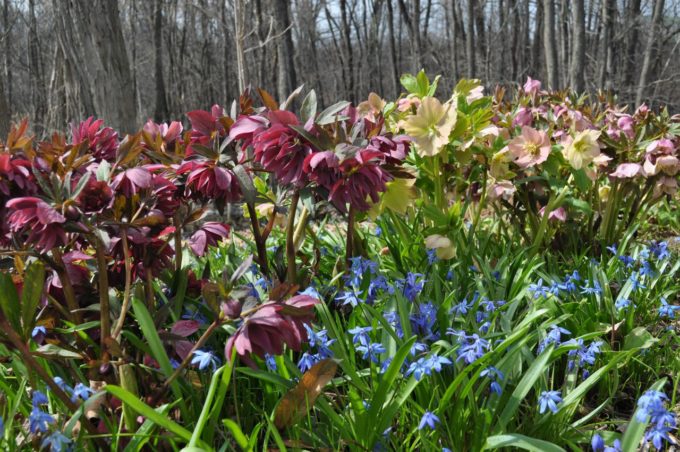RED is commonly associated with heat, activity, passion, sexuality, anger, love and joy. It is the universal color for stop, pay attention…LOOK AT ME!
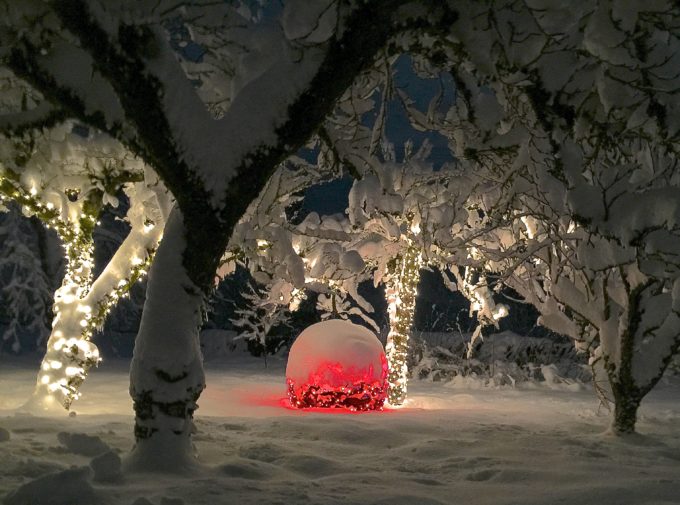
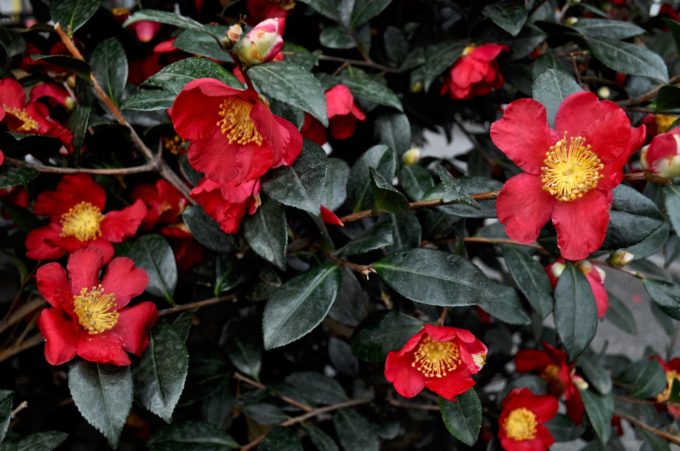
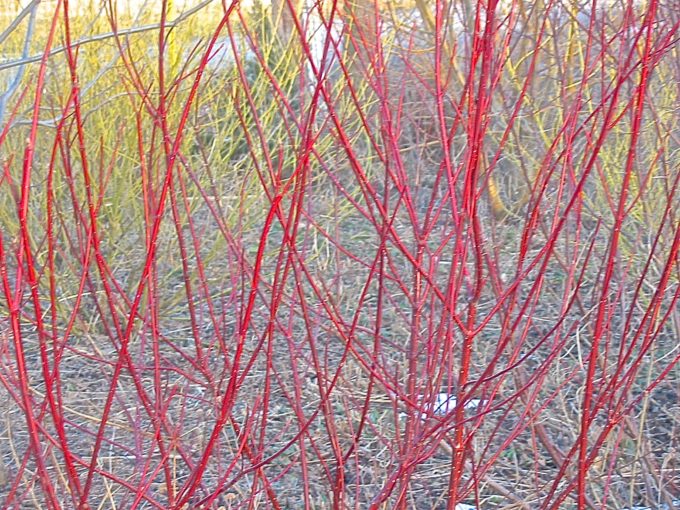
In planting design, red and its many hues can immediately focus attention on a particular element or view. With less color competition in the winter garden, chestnut bark, cardinal stems, garnet fruits, bronzy red foliage, and burgundy flowers really zing.
I am a big advocate of bold, red, coral, orange, and yellow winter stem color in my garden designs. I lived for a good chunk of time in the Mid-Atlantic and Northeast regions surrounded by a predominantly gray-brown, deciduous winter landscape for close to 5 months of the year. In Portland (thankfully!) winter is now a few months shorter, generally benign, and much more evergreen than back East.
A simplistic (but compelling!) winter planting that I left in the Hudson Valley consisted of copses of Betula nigra ‘Heritage’ (river birch) surrounded by thickets of Cornus sericea ‘Cardinal’, a vibrant red-twig dogwood with cardinal-red stems. I immediately understood the cultivar name after watching a male cardinal perched for hours on this dogwood’s twiggy silhouette in a snowy white landscape at our former nursery…it was the perfect color match between flora and fauna! Other spectacular winter red-twig dogwoods include Cornus sericea ‘Baileyii’ with bright red (carmine) winter stems (green foliage in season) and C. sericea ‘Hedgerow’s Gold’, with deep garnet branches covered in season with spectacular bright golden-yellow variegated foliage.
Acer palmatum ‘Sango Kaku (coral bark Japanese maple) is a small tree standout that tones up gardens in winter with its brilliant scarlet bark. After leaf drop, the bark and twigs take on a coral-red tinge that grows deeper as winter advances. Another is Acer rufinerve ‘Erythrocladum’ (in the snake bark maple group) that shines with winter bright coral-orangey red bark. And, of course, there is Acer griseum (paperbark maple) with its textured, peeling, papery sheets of chestnut bark that reveal cinnamon-brown underneath. In the same vein is Lagerstroemia indica x fauriei ‘Natchez’, which as it ages, shouts out in the winter landscape with a bark mosaic of cinnamon-brown.
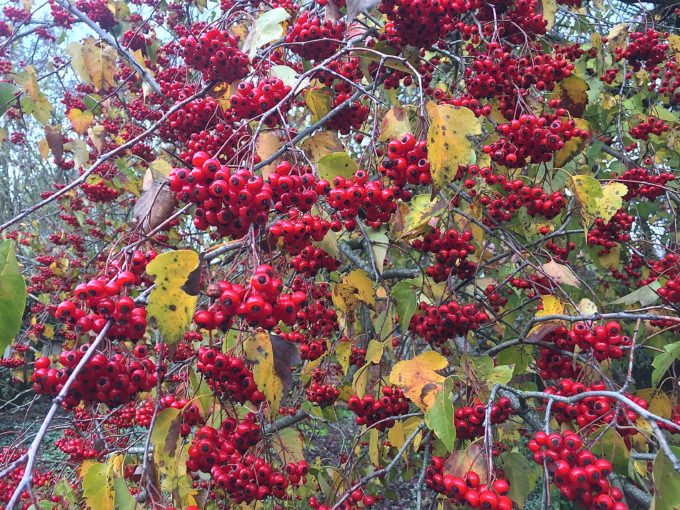
Winter fruits play heavily in my winter gardens. I favor trees and shrubs producing red fruits that don’t mush and ferment quickly in cold weather, persisting well into winter as a food source for resident birds (and a source of enjoyment for we humans). A good example is the crabapple, Malus x ‘Donald Wyman’, a small, but spreading tree that produces lots of bright red, persistent crabapples (to 3/8” diameter). A few other red-fruited crabapples with the same qualities are Malus sargentii and M. ‘Jewelberry’ (both better suited for small gardens) and M. ‘Sentinel’ a narrow, upright tree for tight spaces.
On Portland streets, Crataegus lavalleei (Lavalle hawthorn), Crataegus phaenopyrum (Washington hawthorn), and C. viridis ‘Winter King’ turn my head in December and January. All of these hawthorns produce abundant, showstopping clusters of red to orange-red fruits that ride well into winter. A bonus is their toughness and adaptability to our summer dry climate.
Evergreen English holly (Ilex aquifolium) produces the stereotypical holiday red berry in Pacific northwest gardens. While here to stay, natural resource managers and gardeners alike are concerned about this holly species spread in natural areas, parks, and national forests. In my own garden, I see the pervasive germination of seedlings from a female English holly that came with our northwest Portland house five years ago. But how I love this spiny evergreen laden with red, look-at-me fruit from November through March and the birds that slowly peck away at them.
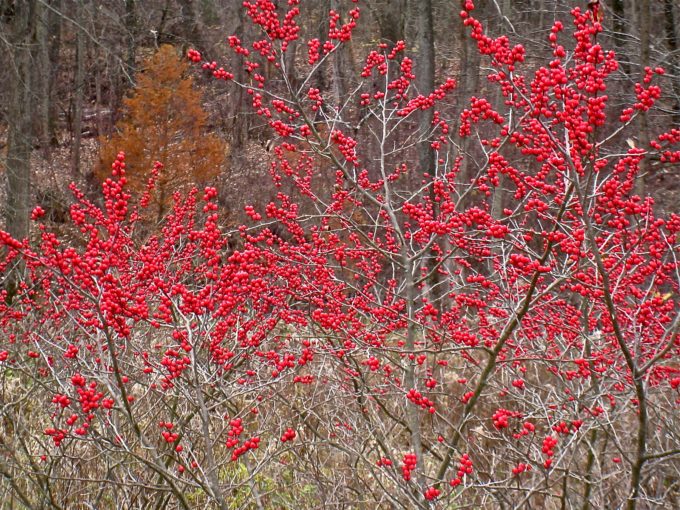
Truth be told, I much prefer deciduous hollies like Ilex verticillata ‘Winter Red’, ‘Red Sprite’, and ‘Sparkleberry’. Small white blooms mature into vivid red fruit after leaf drop in the fall. Deciduous hollies need a late-blooming male variety planted nearby in order to produce berries and they grow best in soils that retain moisture.
Viburnums are versatile, garden-worthy shrubs and consistently in my arsenal of winter red-fruits. In our garden Viburnum opulus ‘Exuberant’ displays bunches of red fruit around our front deck following the most glorious fall foliage display. Another favorite is Viburnum setigerum known as the tea viburnum because its leaves were used by Chinese monks to make a sweet medicinal tea. While I’m not steeping its leaves, I do delight in this viburnum’s fat clusters of bright red berries that often weigh down branches.
Let me not leave out another red knockout for winter gardens. Nandina domestica (heavenly bamboo) in its many forms provides lacy evergreen foliage turning brilliant shades of red in autumn, topped by clusters of red berries. My new favorite selection is Sienna Sunrise (‘Monfar’) with its intense fiery red new foliage and red highlights through winter.
Lower to the ground, I eagerly await hellebores that pull me from winter into spring. Among my favorites is Helleborus Winter Jewels ‘Cherry Blossom’ with its luscious large, semi-double blooms of rich pink with deep, cherry red centers. Towering above, dark red varieties of Camellia japonica, always remind of Alice in Wonderland and the Queen of Hearts. A sign of promise…just in time for Valentine’s Day!
